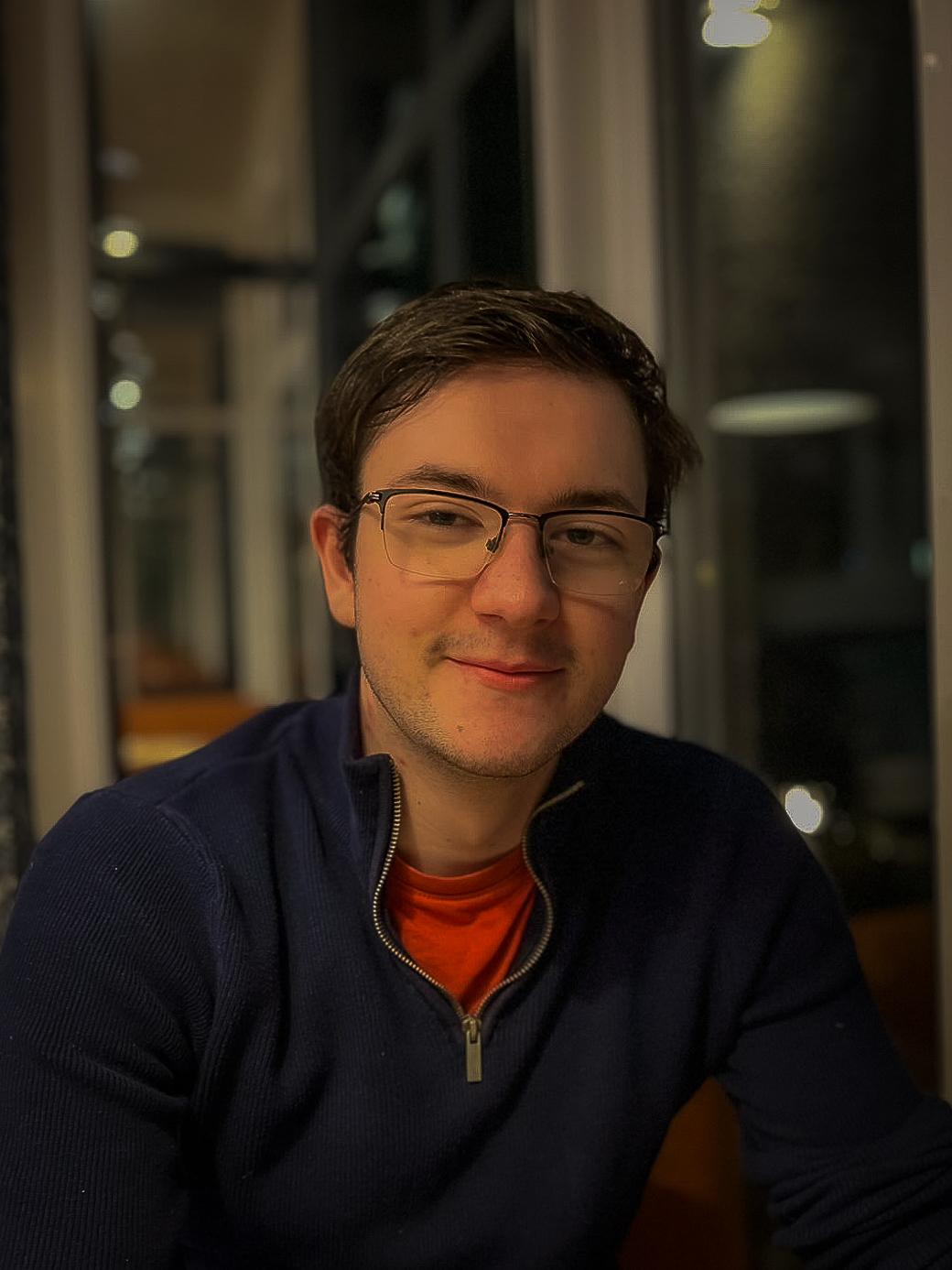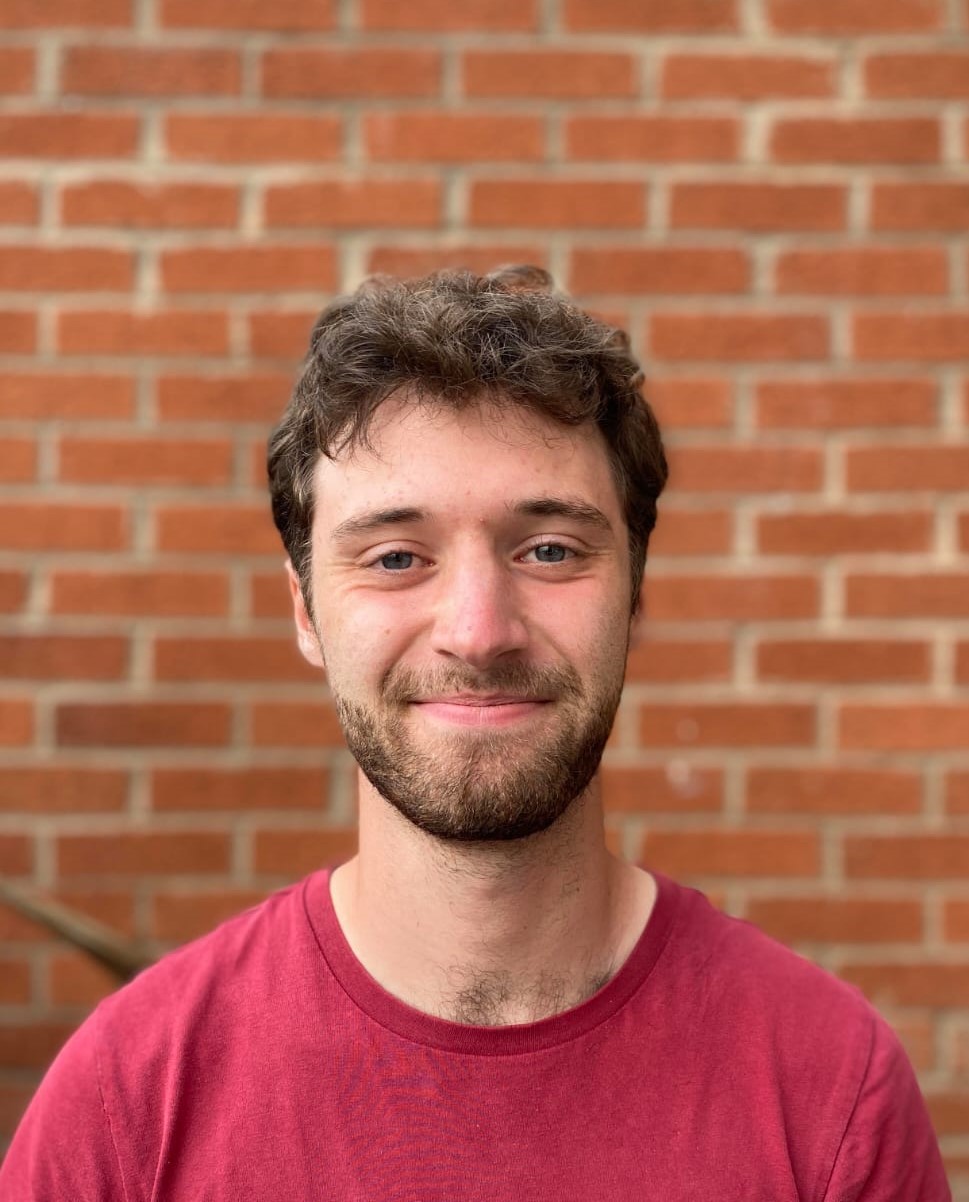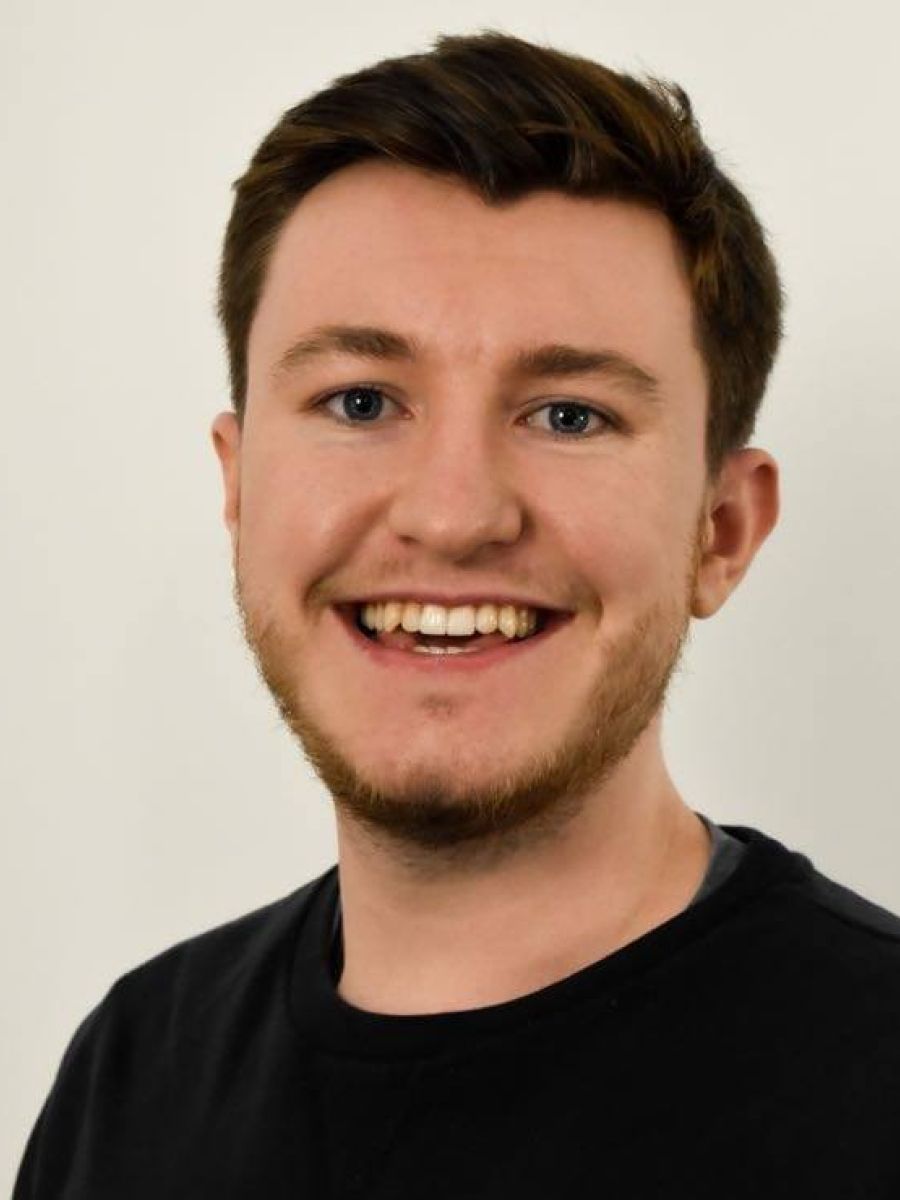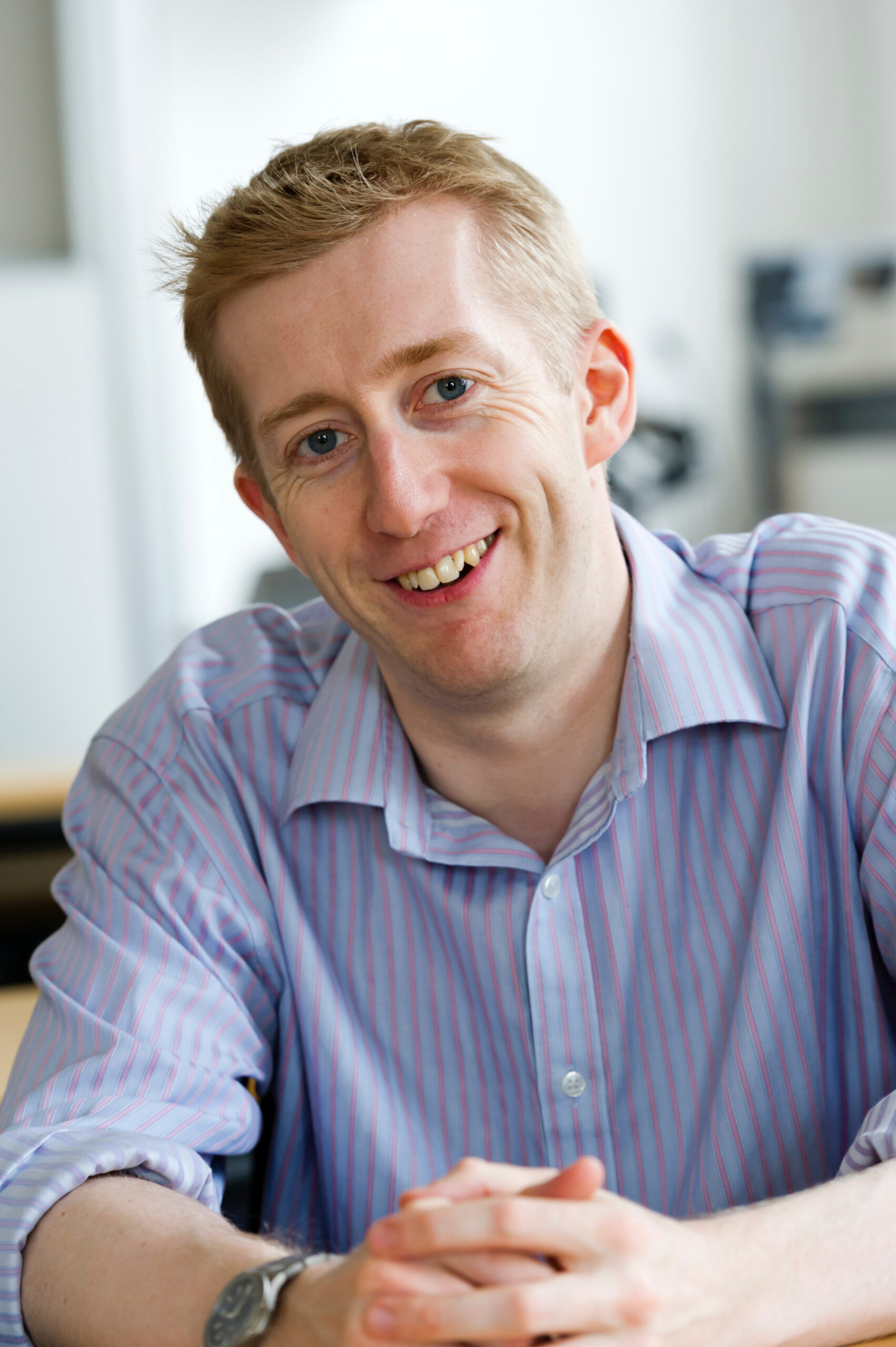Our people

Professor Tom Scott

Professor Tom Scott
Professor Scott’s research is based around ageing, corrosion and characterisation of radioactive materials in engineered and environmental systems. He is the academic lead for the Sellafield UK Centre of Expertise for Uranium and Reactive Metals. Working with Sellafield he has successfully developed and deployed two novel radiation detection technologies in the past 5 years, including the Advanced Airborne Radiation Monitoring (AARM) system which won the 2014 RAEng ERA award for innovation.

Professor Simon Middleburgh

Professor Simon Middleburgh
Simon was appointed to Bangor University’s Nuclear Futures Institute in March 2018. His research is focused on developing new nuclear materials, investigating material behaviour in extreme environments (including nuclear and aerospace) and combining materials modelling techniques with experimental methods. He is a Fellow of the Institute of Materials, Minerals and Mining (FIMMM) and Member of the Institute of Physics (MInstP).

Professor Paul Sellin

Professor Paul Sellin
Paul Sellin received his PhD in Nuclear Physics from University of Edinburgh (UK) in 1992 in the field of semiconductor nuclear detectors. His current research interests at the University of Surrey include the development and characterisation of radiation detectors and detector materials for applications in nuclear physics, medical imaging, and security detection.

Dr Neil Gaspar

Dr Neil Gaspar
Dr Gaspar is academic programme lead for Nuclear Threat Reduction at AWE and Quantum Technology lead. His Quantum Technology work started with sensjng and algorithms. Recently he has been developing use cases and undertaking horizon scanning activities. His previous experience includes modelling the properties of materials with novel microstructure or anomalous behaviour.

Peter Martin

Tomas Martin

Tim Elliot

David Richards

Ross Springell

Mahmoud Bakr Arby

Dr Ville Rimpilainen

Dr. Ville Rimpilainen
Ville is the day-to-day Centre Manager of the NTR-Net & Centre for Doctoral Partnership. He is the central point of contact for enquiries.

Mrs Aneta Taylor

Mrs Aneta Taylor
Aneta provides strategic and operational support to the Centre Manager of the NTR-Net and the Centre for Doctoral Partnership, and serves as a central point of contact for research-related enquiries.

Evie Read

Evie Read
Project Title: Optimising deep learning approaches to evaluating array data for forensic seismology
School: School of Earth Sciences, University of Bristol
Supervisors: Dr. James Verdon & Prof. James Wookey
Abstract: Nuclear threat reduction and treaty-compliance monitoring relies on a range of observing systems including radionuclide, hydroacoustic, infrasound and seismic systems. Seismic monitoring (for example, the primary sites included in the CTBTO IMS system) uses local seismic arrays (1-1000s distributed individual sensors) to provide extra information including improved signal-to-noise for event discrimination and directional constraints to aid location. Seismic arrays are used at all scales, from the continent-spanning USArray to extremely localised systems used in the hydrocarbon industry. A recent development in seismic imaging is the use of fibre-optic distributed acoustic sensing (DAS), which enables buried fibre optical cable to be interrogated as a dense array of individual sensors, relying on the huge multiplicity of data to overcome the relatively low sensitivity of the individual elements. This means that huge amounts of seismic data are being collected for a wide variety of purposes, requiring advances in methodology to enable their efficient handling. Techniques like deep learning (DL) are beginning to make significant in-roads into the automation of seismic data interpretation. Such approaches are now becoming established for unsupervised picking of large catalogues of, e.g., regional seismicity and volcanic events. However, these approaches have not generally been tuned for local array approaches, treating single stations as independent. Furthermore, they have not targeted explosive style event mechanisms (in fact, training processes specifically biases them away from identifying such events), meaning that automated catalogues resulting from them may not be suitable for detection of anomalous events of interest to forensic seismology. In this project my aim is to work on testing and adapting DL approaches to array data and non-earthquake sources specifically for forensic seismology applications.

Tom Scott

Tom Scott
Project Title: Image based classification of crystallites and particles for nuclear forensics
School: Nuclear Futures Institute, Bangor University
Supervisors: Prof. Michael Rushton & Prof. Simon Middleburgh
Abstract: The project focuses on creating image classifiers for crystallites and particulates found during a nuclear forensics’ investigation. These particles reveal valuable information about the processes that formed them, their origin, and how they have aged. Changes within the particle shape, size and other optical properties due to environmental and industrial processes can be indicators of there history. The project aims to develop a machine learning based system to automatically classify nuclear particles based on there appearance, aiding a nuclear forensics investigation. With the aid of deep learning techniques, aided by the training datasets of particles of a known provenance, will be used to develop an imaging pipeline. The largely automated system will allow for the rapid screening of large samples as well as potentially hazardous samples. Initially the classifiers will be trained on simulants such as ceria, which will undergo controlled and artificial weathering to create model training datasets. To build the training datasets, optical micrographs generated from an automated sampling system will be used. Existing computer vision tools such as OpenCV will be utilized to isolate individual particles before moving onto being used to train the AI image classifiers. Once the system has been validated with simulants, the system will be retrained on nuclear materials.

Michael Rushton

James Verdon

James Wookey

Liwia Kocela

Liwia Kocela
Project Title: Application Of Machine Learning And Data Science For The Processing Of Spectral Data Used To Rapidly Determine Threat Materials In Hazardous Nuclear Environments
School: School of Physics, University of Bristol
Supervisors: Dr. David Megson-Smith & Prof. Tom B. Scott
Abstract: The decommissioning and monitoring of legacy nuclear facilities demand advanced, non-contact techniques capable of accurately identifying hazardous materials. Achieving a balance between the accuracy of material identification and the speed required for comprehensive spatial coverage poses a significant challenge. This work introduces an innovative optical methodology that combines the rapid imaging capabilities of Hyperspectral Imaging (HSI) with the specificity of Photoluminescence (PL) mapping, resulting in a novel technique termed Photoluminescent Map Imaging (PLMI). HSI is a rapid non-contact, non-destructive imaging technique that measures the reflectivity spectrum of materials. However, this technique is non-specific and requires complementary imaging to identify the material. Photoluminescence mapping is a point measurement technique that scans an excitation source and captures the resultant emission spectra. Hence, it is far more material specific than single spectra techniques such as reflectance or fluorescence spectroscopy. PLMI aims to extend this to a multi-point imaging system. The technique generates four-dimensional hypercubes which contain rich spectral and spatial information, which allow for rapid, non-destructive identification and localisation of materials in hazardous environments. This project aims to develop a stand-off detection system for field deployment as a handheld or robotics aided system. This system will provide comprehensive coverage of large and complex areas and will use machine learning for efficient identification and localisation of materials. A tailored spectral library of relevant materials will be used in conjunction with a computer vision model for automated real-time detection of present materials. The integration of hyperspectral imaging and photoluminescence spectroscopy, supports the nuclear threat reduction mission where rapid and accurate identification of hazardous materials is critical. This project will develop the toolset that can aid nuclear forensics and monitoring of active nuclear sites.

Lukasz Tomaszewski

Lukasz Tomaszewski
Project Title: Optimisation of radiation health monitoring through machine learning and data fusion
School: School of Mathematics and Physics, University of Surrey
Supervisors: Dr. Caroline Shenton-Taylor & Dr. Jack Henderson
Abstract: This research project seeks to build on prior studies in radiation dosimetry, focusing specifically on the relationship between glow curve mathematical modelling and the fundamental physics. Previous research has highlighted the use of silica beads and fibres for delayed thermoluminescence dosimetry (TLD), giving access to new ways to detect and monitor ionising radiation. This study will compare real-time dosimetry with that obtained through delayed in-situ material measurements obtained via thermoluminescence dosimetry. Machine learning techniques will be employed to model the glow curve response across various bead and fibre materials, potentially drawing from experimental seed datasets. Approaches such as neural networks will then explore the capability of artificial intelligence to distinguish material composition characteristics (bead colour, fibre core type), to determine the received radiation dose and understand the kinematics of the trapped electrons. This will produce an enhanced analysis of their structure and behaviour to predict and aid radiation dosimetry, detection and monitoring and, in turn, improve safety. To further optimise this project, data fusion approaches will assess the diagnostic information obtained when retrospective and real-time radiation monitoring methods are combined. This project’s scope will inform an assessment of delayed material dosimetry within the radiation health monitoring landscape, supporting a diverse array of detection and monitoring methods. Benefitting an array of disciplines that handle ionising radiation, focusing on security and safety applications and where retrospective monitoring may be required in cases of natural disasters or human accidents.

Alex Little

Alex Little
Project Title: Production of Tritium Using Enhanced Inertial Electrostatic Confinement Fusion Devices
School: School of Physics, University of Bristol
Supervisors: Prof. Tom B. Scott & Dr. Tomas Martin
Abstract: The project aims to investigate the production of tritium using inertial electrostatic confinement (IEC) fusion devices. Tritium is a critical isotope for most nuclear fusion power concepts, but contemporary production by heavy water (CANDU-type) fission reactors is wholly unsuitable for future fleets of commercial fusion plants. The use of small IEC fusion devices to convert lithium-6 and helium-3 into tritium, is an attractive alternative with a lower proliferation profile and no long-lived radioactive waste. Such devices have typically only been used for basic neutron research and diagnostics applications due to relatively low neutron outputs. However, the enhancement of IEC devices with lattice confinement fusion (LCF), demonstrated by a current University of Bristol project, offers more practical neutron intensities. The PhD project will support development of a bespoke IEC device configured specifically for tritium production, including investigating the proliferation implications of IEC fusors.

Ewan Woodbridge

Ewan Woodbridge
Project Title: Advanced Methodologies for Airborne Radiometric Surveying
School: School of Physics, University of Bristol
Supervisors: Prof. Tom B. Scott, Dr. Peter Martin & Dr. Dean Connor (NNL)
Abstract: My PhD aims to demonstrate the use of uncrewed aerial vehicles (UAVs) for environmental monitoring and widescale radiological mapping. By developing advanced methodologies for airborne radiometric surveying, this research is critical for applications in geological exploration, environmental assessments, and nuclear safety. A central focus is improving the ability to distinguish between anthropogenic (man-made) and naturally occurring radioactive materials (NORM) by air, which is essential for industries such as civil and non-civil nuclear operations, mining, environmental surveys, and agriculture. Establishing radiological baselines for various sites allows us to better understand NORM distribution and enhances our ability to respond effectively to radiological or nuclear incidents. A significant aspect of this work involves the integration of LiDAR scanning technology to create 3D digital twins of survey sites. These detailed models enable us to overlay and reconstruct radiological data in a three-dimensional space, allowing for precise localisation and intensity analysis of radiation. This combination of LiDAR and radiometric data provides a more comprehensive understanding of the radiological distribution across different environments, offering insights that traditional methods cannot achieve. Currently, these methodologies are being tested in real-world environments, including active mining sites in Cornwall, legacy uranium mines in the US, and the Ravenglass Estuary in Cumbria. The diverse datasets collected from these field sites allow us to refine our techniques and demonstrate the value of utilising UAVs for surveying. Ultimately, this research aims to provide critical tools for industries to manage radiation risks and improve response strategies in the event of a radiological incident or environmental contamination.

Edward Martin

Edward Martin
Project Title: Novel active interrogation system for Special Nuclear Material (SNM), leveraging a compact fusion neutron source in conjunction with particle detectors
School: School of Physics, University of Bristol
Supervisors: Dr. Mahmoud Bakr Arby & Prof. Tom B. Scott
Abstract: The project focuses on developing a non-destructive method for the detection of Special Nuclear Materials (SNMs). To achieve this, we will leverage the Threshold Energy Neutron Analysis (TENA) method, a recent technique developed at Kyoto University, that utilises “neutron-in, neutron-out” analysis. TENA employs a compact neutron source based on Inertial Electrostatic Confinement (IEC) technology to probe SNMs. When probing neutrons interact with SNMs, secondary neutrons are produced through nuclear fission; detecting these secondary neutrons provides a clear indication of the presence of SNM. The project combines experimental testing and simulation to optimize detection parameters such as neutron flux, energy, irradiation time, and detector configuration. This optimization will enhance the ability to reliably distinguish fission neutrons from background sources, providing precise identification of SNMs even in challenging conditions. Initial experiments have yielded promising results, and the technique has been accepted for publication in the Journal of Nuclear Sciences and Techniques. Ultimately, this system aims to advance nuclear counter-terrorism by offering a portable, effective, and accurate tool for SNM detection at security checkpoints.

Sam Fearn

Sam Fearn
Project Title: Real time identification and tracking of radioactive materials carried by humans
School: School of Physics, University of Bristol
Supervisors: Dr. Peter Martin & Prof. Tom B. Scott
Abstract: The widespread availability of nuclear and radioactive materials, commonly used in industrial and medical applications, poses a significant risk of misuse in the form of radiological dispersal devices. To mitigate this threat, effective screening for radioactive materials is essential. Deploying distributed detector nodes in urban areas with high traffic or near strategic targets offers a practical solution for identifying and intercepting trafficked materials with malicious intent. Such systems, employing scintillator-based gamma-ray spectrometers, can continuously monitor, detect, and localize nuclear and radioactive threats in real time. These spectrometers provide energy spectra of detected radiation, enabling the identification of materials, which is required to distinguish them from benign sources, such as medical isotopes and naturally occurring radioactive materials. This project focuses on optimizing analysis of data from these spectrometers, such that radioactive material can be detected and identified in real-time. Additionally, it investigates the complex variations in background radiation spectra observed in urban environments, influenced by factors such as human activity, weather, and temperature. The findings will help to inform improvements existing systems being tested in the UK and to facilitate the localisation of radioactive threats, helping to inform emergency response strategies.

Caroline Shenton-Taylor

Dean Connor

David Megson-Smith

William Nuttall

William Nuttall
William Nuttall is Professor of Energy Policy and Transformation (part-time) is the School of Electrical, Electronic and Mechanical Engineering. His main professional focus has been civil nuclear power. He is the author of Nuclear Renaissance – technologies and policies for the future of nuclear power, fully revised as a second edition in 2022. For NTR-Net he is focussed on matters relating to the third pillar of the Nuclear Non-Proliferation Treaty – “peaceful uses”. He is particularly interested in the NTR-Net thematic focus on “Treaties”. He is also author of Britain and the Bomb – Technology, Culture and the Cold War published in 2019. Bill is available to supervise NTR-Net PhD projects at the University of Bristol.

Jack Henderson

Moli Smith

Moli Smith
Project Title: Impacts of Ageing on the Physical Properties of Actinide Oxides
School: Nuclear Futures Institute, Bangor University
Supervisors: Prof. Simon Middleburgh
Abstract: This research investigates the effects of ageing on the physical properties of actinide oxides, specifically uranium dioxide (UO2) and plutonium dioxide (PuO2). Radioactive decay can lead to changes in morphology, microstructure and magnetic behaviour, causing the forensic signatures of these materials to evolve. Studying these changes is important for the nuclear forensics field as it helps improve understanding of the origin and history of the material. The work uses computational techniques such as density functional theory (DFT) to model these physical changes in bulk structures and surfaces. Computational methods are commonly used within nuclear forensics as these materials are typically complex and difficult to handle experimentally. These modelling techniques can also enhance understanding of material behaviour, enabling predictions beyond empirical data and identifying new areas for experimental exploration. This research will use experimental techniques to compare and validate computational methods to better understand the physical changes associated with radioactive ageing.

Jacob Taylor

Jacob Taylor
Project Title: Intentional forensics of oxide nuclear fuels using isotopes of perturbed isotopic abundance
School: School of Computer Science and Engineering
Supervisors: Prof. Simon Middleburgh
Abstract: The primary focus of the research is to assess the feasibility of using dopants as forensic tools in the nuclear industry. The study evaluates five key factors for determining the suitability of a dopant: ambiguity, durability, fuel performance, economics, and overall stability. These factors are crucial for ensuring that the dopant can, even post reactor operation, be used to track, and identify nuclear materials without compromising the performance of the fuel. Simulations have been conducted using Serpent, a Monte Carlo simulation program that is well-suited for modelling the in-reactor behaviour of UO2 fuel pellets. This software allows for highly accurate predictions of how different dopants will behave under reactor conditions. Modelling work will be experimentally validated using experimental techniques, in the short term: pressing proposed pellet compositions and testing for the presence of dopants post-manufacture, with an initial focus on chromium as a taggant. Additional dopants will be explored as the project progresses. Chemical research is also being conducted to assess the integrity and long-term stability of these dopants, which is critical for ensuring that they do not degrade or react in ways that would affect the performance of the fuel. Current nuclear forensic methods, while effective, require a time-consuming and destructive process to trace the origin of nuclear materials. These methods are prone to errors and misidentifications such as the plutonium time error, which can be problematic in the context of security and non-proliferation efforts. The introduction of dopants as a forensic tool could enable non-destructive, initial identification of a material’s lifecycle, significantly reducing the need for these complex procedures. By embedding traceable elements in the fuel and creating a unique fingerprint, it becomes possible to track the material’s history and ensure its origin can be quickly and accurately identified using centralised databases.

Jude Ramsbottom
Queen Mary University of London

Jude Ramsbottom
Project Title: Exploring graphene single electron transistors for radiation detection
School: School of Physical and Chemical Sciences
Supervisors: Prof. Jan Mol, Dr James Thomas
Abstract: This PhD project focuses on developing and testing graphene-based single-electron transistors (SETs) as advanced sensors for detecting ionizing radiation. SETs operate by exploiting Coulomb blockade and tunnelling effects to sense extremely small changes in charge or temperature caused by non-random fluctuations in electron fermi level energies, potentially induced by individual interactions from particle or photon radiation in chip substrates. This research focuses on constructing SET chips from CVD graphene using lithographic and feedback-controlled breakdown methods and integrating them into functional sensing arrays. Experimental setups will include cryogenic transport measurements, automated probe stations, and exposure to controlled alpha and gamma radiation sources. These devices will be evaluated across a range of temperatures from millikelvin temperatures to 100 K, with potential use at room temperature conditions. The anticipated outcome of this work is the realization of a novel class of quantum-enabled radiation sensors. Specific objectives include enhancing detection sensitivity for potential spectrographic applications, assessing the effects of radiation-induced damage on device integrity and performance, and refining fabrication to support scalability and reproducibility. Applications include radiation detection for safety, inspection, and non-intrusive diagnostics, as well as advanced scientific instrumentation. Additionally, the work contributes to fundamental research in nanoscale temperature sensors and the interactions between ionizing radiation and low-dimensional materials.






